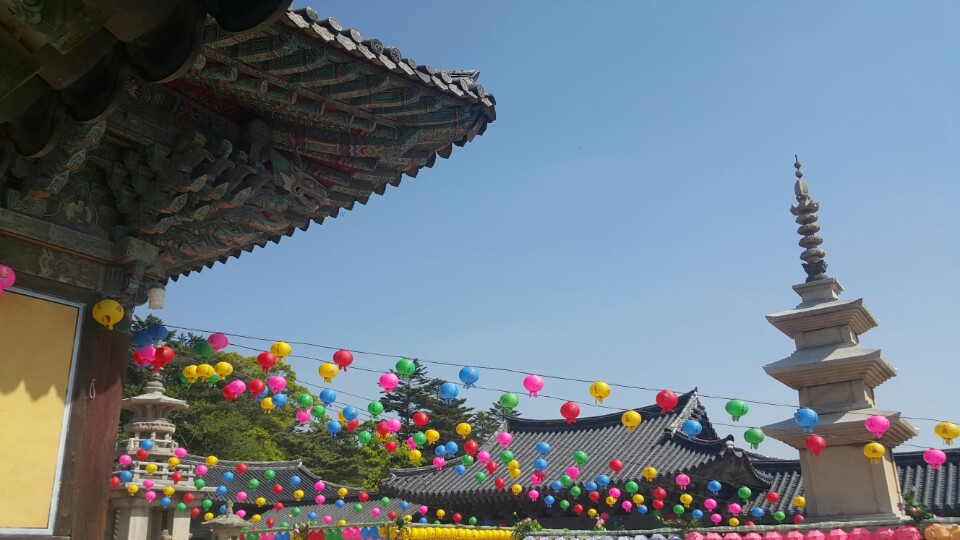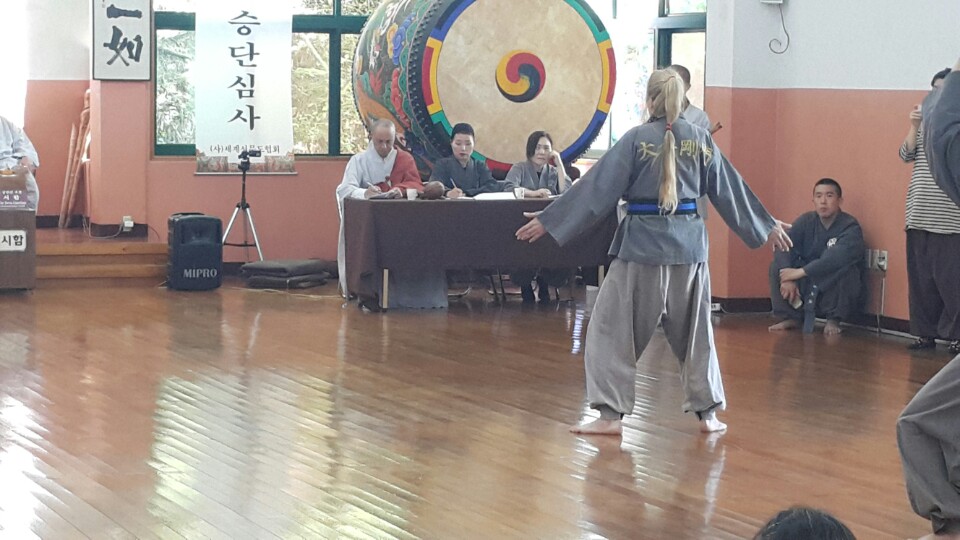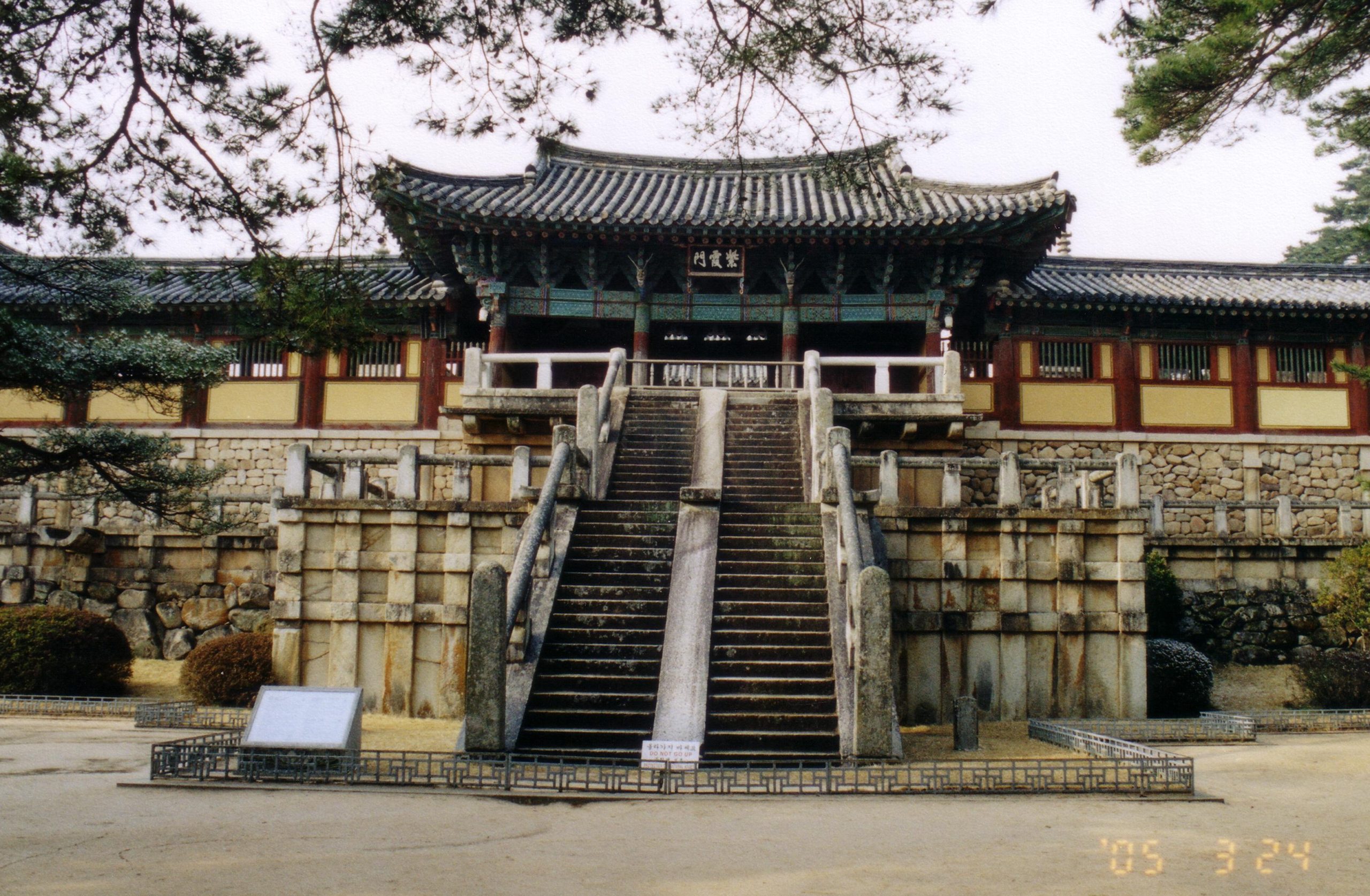Gyeongju’s Temple Experiences
Written and photographed by Melline Galani.
There is no argument that Gyeongju, the former capital of the ancient kingdom of Silla, has become one of the most popular tourist destinations in South Korea. Home to not just one but several UNESCO World Heritage Sites and 31 national treasures, it is bound to be an unforgettable visit. What you will find here are two of my favorite temples in Korea; one known for its beauty and architecture, the other for its temple-stay program.
My first favorite temple is Bulguksa (불국사). It was one of many “firsts” that I experienced on my maiden voyage to South Korea. It was love at first sight. It also became the place where I experienced my first and only meditation and, consequently, where the vision about my future life in Korea was revealed to me. Originally built in 528 during the Silla Dynasty, Bulguksa was later rebuilt by Kim Dae-seong (700–774), a chief minister in the Silla Kingdom, in the year 751. Unfortunately, the temple caught fire during the Imjin War (1592–1598). After this time, the temple suffered further damage and was often the target of robbers. Restorations were made over the centuries, often based on ancient descriptions, but the complex is now much smaller than the original.

The temple is accepted as the quintessence of Buddhist architecture. With colorful tiles decorating the underside of the roof and large statues of the Four Heavenly Kings at the entrance, it is truly a sight to behold. Along the way, you will pass by a beautiful pond, and just outside the temple, you will be greeted by one of the most beautiful façades of any temple in Korea. The temple was recognized as a UNESCO World Heritage Site in 1995 and remains active today, with monks chanting and performing Buddhist rituals in every hall. On top of its rich history, Bulguksa also encompasses seven of South Korea’s national treasures. In my opinion, anyone who plans a trip to South Korea should definitely visit Bulguksa.
My second favorite temple in the Gyeongju area is Golgulsa (골굴사). Located at the foot of Hamwol Mountain, Golgulsa houses twelve caves in a tall cliff, with a rock-carved statue of Buddha sitting at the highest point. Here anyone can experience a one-of-a-kind temple stay and the Korean Buddhist martial art known as sunmudo (선무도) from Buddhist monks themselves. This is a perfect opportunity to get away from the hustle and bustle of city life and find inner peace at this relaxing haven. Sunmudo is a mixture of moving meditation and reflective martial art. It emphasizes the harmony of body and mind through observing one’s breathing. Its origins can be traced back a thousand years.

I discovered this temple through my Romanian friend who wanted to become a certified sunmudo trainer. She applied for a two-year volunteer training program and was accepted, which made her the first (and, as of this article, the only) Romanian in history to participate in this program. During her time at Golgulsa, she did volunteer work, lived like a monk, and learned sunmudo. Together with my children, I was lucky enough to experience the temple-stay program during a weekend in the spring of 2018. That weekend was my friend’s examination day, so we were also able to be there to support her.
We did sunmudo training, ate temple food (vegan but delicious), participated in Buddhist rituals, rode horses, and practiced archery. It was an amazing weekend with a lot of experiences that my kids loved. Moreover, we got the chance to see how our friend passed the difficult examination.
For those who are not passionate about learning any martial art, Golgulsa is still worth visiting. The temple itself is really beautiful, despite its small size, and the huge stone Buddha statue on the top of the cliff is splendid. (It is designated as Treasure No. 581 and has a dimension of four meters in height and 2.2 meters in width.) More importantly, the view of the surroundings from the clifftop is remarkable.

During my trip there, I saw many foreigners interested in either learning sunmudo or experiencing a temple stay in Korea. Luckily, the staff there can speak decent English, with foreign volunteers there as well to help you. For those interested in trying any of the programs that Golgulsa has to offer, their official homepage has further information.
Golgulsa also offers winter and summer camps for kids, so parents can send their children there for a new and special experience. Moreover, volunteers are always welcome during these camps should parents want to help out themselves. Additionally, from time to time, there are special tea ceremonies that provide a great opportunity for tea enthusiasts to learn more about Korean tea practices.
GOLGULSA ONLINE
English version: www.golgulsa.com
Korean version: golgulsa.templestay.com
Facebook page: Sunmudo Templestay Golgulsa (sometimes with Korean and English content)
THE AUTHOR
Melline Galani is a Romanian enthusiast, born and raised in the capital city of Bucharest, who is currently living in Gwangju. She likes new challenges, learning interesting things, and is incurably optimistic.





